INTRODUCTION TO
COASTAL
PROCESSES & GEOMORPHOLOGY
SECOND EDITION
GERHARD MASSELINK MICHAEL HUGHES JASPER KNIGHT
INTRODUCTION TO
COASTAL
PROCESSES & GEOMORPHOLOGY
SECOND EDITION
GERHARD MASSELINK MICHAEL HUGHES JASPER KNIGHT

First edition published 2003
Second edition published 2011 by
Hodder Education, a member of the Hodder Headline Group
Published 2014 by Routledge
2 Park Square, Milton Park, Abingdon, Oxon OX14 4RN
711 Third Avenue, New York, NY, 10017, USA
Routledge is an imprint of the Taylor & Francis Group, an informa business
Copyright 2011 Gerhard Masselink, Michael Hughes and Jasper Knight
All rights reserved. No part of this book may be reprinted or reproduced or utilised in any form or by any electronic, mechanical, or other means, now known or hereafter invented, including photocopying and recording, or in any information storage or retrieval system, without permission in writing from the publishers.
The advice and information in this book are believed to be true and accurate at the date of going to press, but neither the authors nor the publisher can accept any legal responsibility or liability for any errors or omissions.
British Library Cataloguing in Publication Data
A catalogue record for this book is available from the British Library
Library of Congress Cataloging-in-Publication Data
A catalog record for this book is available from the Library of Congress
ISBN 13: 978-1-444-12240-4 (pbk)
Typeset in Palatino Light by Dorchester Typesetting Group Ltd
Cover image: Gerhard Masselink
This textbook has been written for intermediate-level undergraduate students. We have attempted a level of explanation of geomorphological processes in relation to the formation of coastal landforms that is introductory, but that will also extend students analytical skills. We draw on examples from around the world, and many of these have a geographical bias favouring the British Isles and Australia because this is where we have undertaken much of our own research.
This second edition builds on the strengths of the first (published in 2003), but we have corrected a few errors, removed out-dated material and updated with new material, in particular related to sea level. We have also added new chapters on climate and sand dunes. New boxes and case studies in each chapter expand upon elements of the text. Also shown in the book are locations where supporting online materials are available on the publishers website. A headphones symbol  indicates that answers to the reflective questions are available as mp3 files. A mouse symbol
indicates that answers to the reflective questions are available as mp3 files. A mouse symbol  shows where expanded case studies and worked examples are available online. These additional resources are designed to increase students understanding and hopefully their interest in coastal morphodynamics.
shows where expanded case studies and worked examples are available online. These additional resources are designed to increase students understanding and hopefully their interest in coastal morphodynamics.
A number of friends and colleagues have commented on aspects of the first edition of this book: Kitty Bos, Rob Brander, Jo Bullard, Bruce Hegge, Paul Kench, Gui Lessa and Wayne Stephenson. Their comments have been very useful and have greatly improved the readability of this book. We are, of course, responsible for any remaining errors, omissions, inappropriate embellishments and bad prose. We also thank the following colleagues for providing original figures for the second edition of this book: Martin Austin for . Thanks also to Mark Szegner for cartographic assistance.
We thank the following for permission to reproduce figures: Academic Press for . In a few cases it was not possible to trace the copyright holders of figures used in this text. We apologise therefore for any copyright infringements that may have occurred.
| A | constant; dimensional parameter; delta plain aggradation rate (m) |
| a | least squares regression coefficient; height of saltation (m); amplitude of tide (m); longest axis of clast (m) |
| ai | amplitude of partial tide (m) |
| B | height of the subaerial beach (m) |
| b | spacing of wave rays (m); least squares regression coefficient; intermediate axis of clast (m) |
| bo | spacing of wave rays in deep water (m) |
| C | constant; wave velocity or wave celerity (m s-1); sediment concentration (kg m-3) |
| Cd | drag coefficient (-) |
| Cg | wave group velocity (m s-1) |
| CA | accelerated sediment compaction (m) |
| CN | natural sediment compaction (m) |
| Co | deep water wave velocity (m s-1) |
| Cs | shallow water wave velocity (m s-1) |
| c | shortest axis of clast (m) |
| CSF | Corey shape factor (-) |
| D | fetch duration (minutes or hours); grain size (m);
fractal dimension (-) |
| Dr | reference grain diameter (0.25 mm) |
| D* | non-dimensional grain diameter |
| D50 | median sediment size (m) |
| d | wave orbital diameter (m) |
| d0 | wave orbital diameter at the sea bed (m) |
| E | vertical shoreline displacement caused by eustatic change (m); wave energy density (N m-2) |
| eb | bedload efficiency factor (-) |
| es | suspended load efficiency factor (-) |
| F | fetch length (km); tidal form factor (-) |
| Fc | centripetal force (N) |
| Fg | gravitational attractive force (N) |
| Flg | local gravitational force (N) |
| FT | tractive force (N) |
| Ft | tide-generating force (N) |
| Fr | Froude number (-) |
| Fr | densimetric Froude number (-) |
| f | constant; frequency (Hz) |
| fi | frequency of partial tide (hr-1); percentage of grains in grain size class interval |
| fw | wave friction factor (-) |
| G | universal gravitational constant (N m2 kg-2) |
| Gi | phase of partial tide (radians) |
| g | gravitational acceleration (m s-2) |
| H | wave height (m) |
| Hb | breaker height (m) |
| Hl | wave height of the largest waves (m) |
| Ho | deep water wave height (m) |
| Hrms | root mean square wave height (m) |
| Hs | significant wave height (m) |
 | mean annual significant wave height (m) |
| H1/3 | significant wave height (m) |
| Hsx | nearshore storm wave height that is exceeded only 12 hours each year (m) |
| h | bed elevation (m); water depth (m) |
Next page
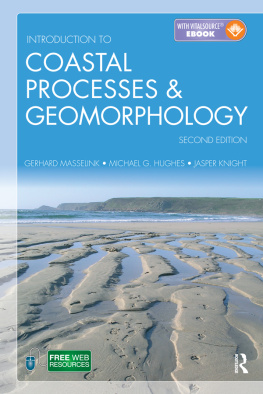
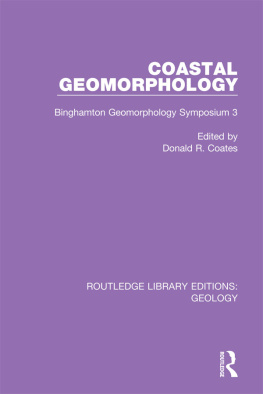


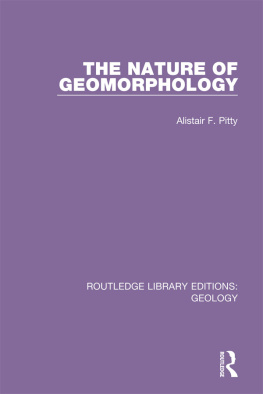
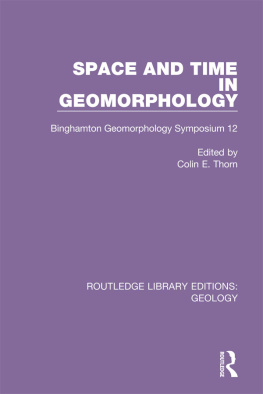
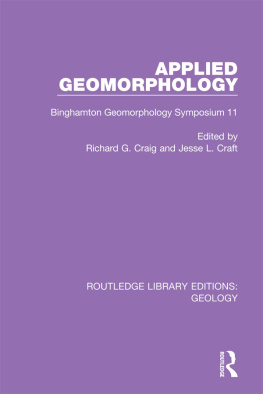
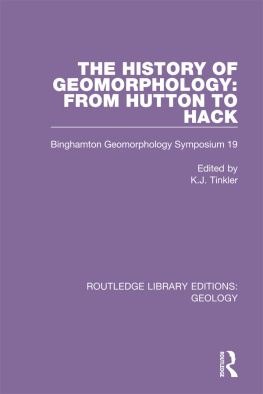
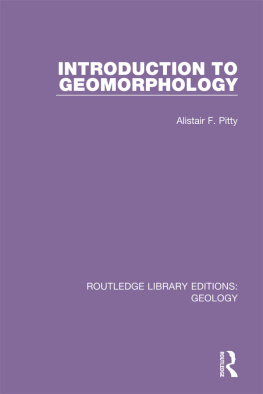
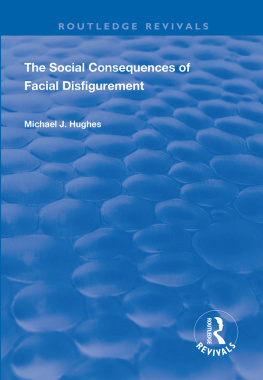



 indicates that answers to the reflective questions are available as mp3 files. A mouse symbol
indicates that answers to the reflective questions are available as mp3 files. A mouse symbol  shows where expanded case studies and worked examples are available online. These additional resources are designed to increase students understanding and hopefully their interest in coastal morphodynamics.
shows where expanded case studies and worked examples are available online. These additional resources are designed to increase students understanding and hopefully their interest in coastal morphodynamics.